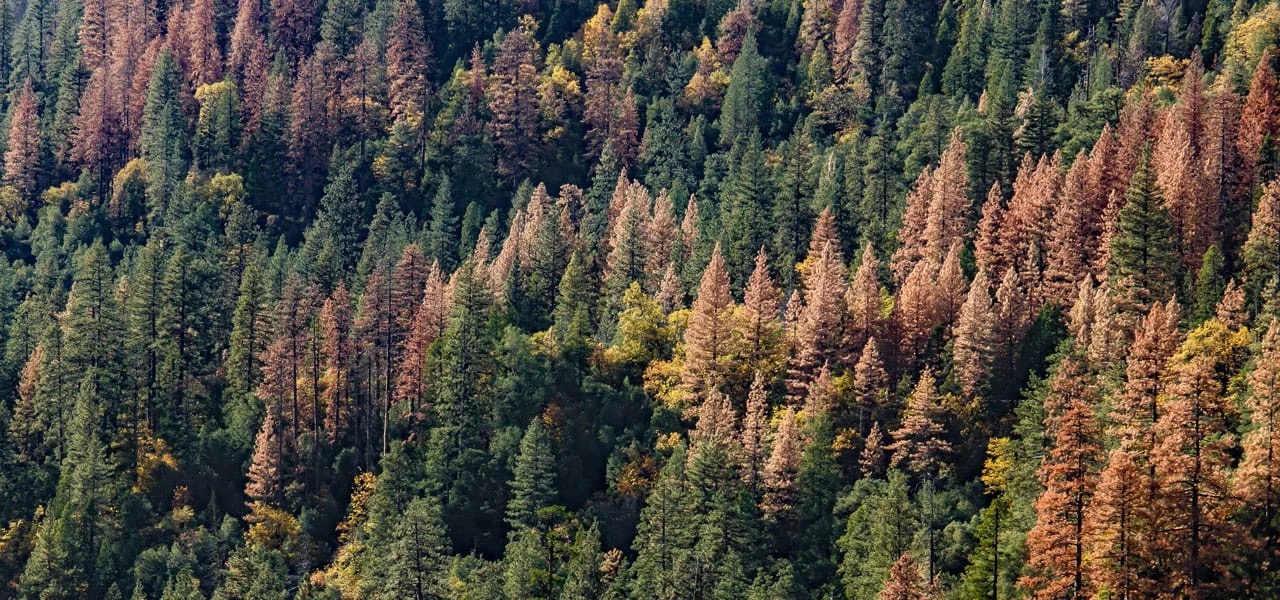At a Glance
Height: 20 to 80 feet
Spread: Narrow, usually around 15-20 inches
Shape: Variable -some keep lower branches, others lose them
Exposure: Full sun or partial shade; 6 or more hours of sun a day
Native? Yes
Evergreen? Yes
Leaves: Evergreen needles, yellow to dark green, 1-3 inches long with sharp tips. The needles grow in bunches of two and they are often more of a yellow hue than other trees in the area. Needles are often curved or twisted.
Fruit: Egg-shaped cones around 2 inches long – the seeds are released when exposed to high temperatures. Cones often have bristles and are difficult for animals to open.
Firewise? No. However, lodgepole pines are dependent on wildfires – the thin bark lowers the tree’s defense to fire, but the heat opens the cones and releases the seeds.
Drought-tolerant? No
Bark: Thin, light-brown bark with small scales. Some bark may be orange or reddish-brown due to sunlight.
Where to Plant: Does best on gentle slopes and with well-drained soil at 6,000 to 11,000-foot elevations. Needs lots of room to grow. Plant away from utility lines, roads, and sidewalks.
Common Problems & Possible Causes
Sap and/or pitch masses on the bark, needles turn brown – Pine bark beetles, such as the mountain pine beetle
Orange/brown clumps of spindly twigs on branches – Dwarf mistletoe
Branches and tree top thins and dies back, bark falls off, sawdust – IPS/engraver beetles

Lodgepole pines regrowing after a fire
About Lodgepole Pines
The scientific name for lodgepole pines includes the word contorta, or contorted, because this tree was first identified near the sea, where it often took on a twisted, scraggly shape. Here in Colorado, however, lodgepole pines are recognized for their great height, incredibly narrow shape, and lower trunks that are bare of limbs.
Lodgepole pines can be notoriously difficult to identify because they can vary their shape so greatly. We’ve already mentioned the twisted pines near the seashore, but if it grows surrounded by shorter and thicker trees, the lodgepole pine will itself grow shorter and thicker.
Most often in Colorado, however, lodgepole pines grow close to each other and create a forest of tall, thin trees.
While they spring up quickly after a forest fire, they then become slow growers. Lodgepole pines can take 100 to 200 years to mature but have been known to live to 500 years or more!
Unfortunately, mountain pine beetles are destroying many lodgepole pines in the Evergreen area. Continual drought has weakened many trees, including lodgepole pines, and made them more susceptible to the beetles.
Read more about the importance of watering your trees >>

Lodgepole pines attacked by Mountain Pine Beetles
While most lodgepole pines self-prune (lose the bottom branches) remember that they can mimic the trees around them. So, in some cases, you might want to have the lower branches removed, especially if they die but stay connected to the tree. Lower branches, and dead, brittle branches at that, are fuel for wildfires, especially for a tree that burns as easily as the lodgepole pine.
Learn more about wildfire prevention >>
Lodgepole pine wood is often used for buildings such as log cabins, furniture, and siding. At one time, it was a popular source for telephone poles.
Contact LAM Tree Service if you have any questions about how to care for your lodgepole pines.
Tree Planting
We recommend spring or early fall planting to get your new trees off to a great start. You can always call us for advice on where to plant your new tree(s) and don’t forget that we offer professional tree planting services if you don’t want to do it yourself!
Recommended Trees & Shrubs
Get A Free Quote
Call us at 303-674-8733 or contact us online to get a free estimate for tree planting, general tree services or any aspect of our Plant Health Care program.
























